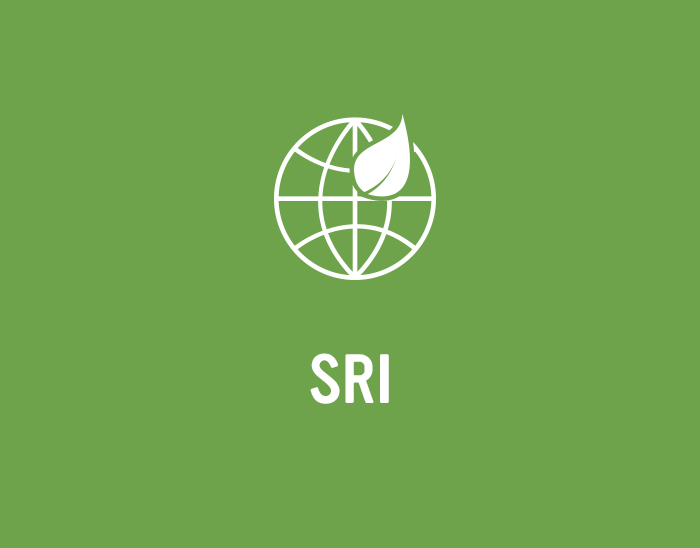
Private debt provides fertile ground for ESG impact
As a private debt investor, Metrics Credit Partners aims to bring leverage to bear as a lender and adviser that is not available in the mainstream syndicated loan market. The cohort of borrowers in the private debt sector is also fertile ground for sustainable finance, as the market has so far typically focused only on the largest corporate entities.
Metrics is an alternative asset manager specialising in private debt, equity and capital markets. Its primary areas of lending are to public and private corporate borrowers, private equity sponsors for acquisition finance, commercial real estate, and project and infrastructure finance – predominantly public-private partnerships.
The firm is also involved in the structured finance sector as an investor in nonbank lending businesses focused on real estate and vehicle finance, and in late 2021 it acquired an existing SME lending business. It had not previously been active in the SME space but has ambitions to grow its presence.
Environmental, social and governance (ESG) considerations have always been important to Metrics’ business. But its depth of engagement and the granularity of the requirements it places on borrowers have ramped up significantly in recent years.
Learn more about Metrics Credit Partners
Andrew Lockhart, managing partner at Metrics in Sydney, explains: “As a private market lender, ESG has been embedded in our business since the very beginning. What has changed recently is the ability better to quantify the ESG performance of companies we finance and a more consistent approach to ESG assessment by lenders across the market.”
Quantifiability is key. Metrics says it is one of Australasia’s first financial institutions to commit to setting a goal through the Science-based Targets Initiative and the first to commit to measure and disclose greenhouse gas (GHG) emissions associated with its loan and investment portfolio using the Global GHG Accounting and Reporting Standard for the Financial Industry.
“We decided we should not require anything of borrowers or impose any conditionality on them unless and until we understood our own emissions targets and rolled them out across the portfolio,” Lockhart explains.
PRIVATE DEBT ALIGNMENT
The sectors in which Metrics operates and the nature of the private debt asset class present a unique opportunity set. Private debt is an increasingly important part of Australia’s capital market and affords greater access to and engagement with borrowers than mainstream syndicated lending or public market fixed-income investment.
The corporate bond sector, for example, is yet to convert the exponential growth in sustainability-linked loan (SLL) facilities in Australia into a comparable flow of sustainability-linked bonds – in large part because of the challenges of public disclosure of KPIs and details on how they will be met. Bond investors typically have to decide whether or not to commit to a set of predetermined sustainability performance criteria rather than having the opportunity to devise these in concert with the issuer.
Private debt investors are much closer to the action. Lockhart explains: “It is one thing to have negative screens and to decide which companies we will and will not lend to based on a range of ESG criteria – and we do all this. But there is also a role, as a private markets lender, to encourage and facilitate improvement of ESG factors across the companies we lend to.”
Metrics’ ESG process is about understanding companies, including making sure it gets the information it needs to assess ESG risk. But it also means working with management to explore how a borrower can make ESG commitments and put strategies in place to meet them.
The Metrics ESG process
Assessing borrowers’ sustainability credentials has become much more than a straightforward screen for Metrics Credit Partners. The firm is striving to apply an environmental, social and governance (ESG) assessment that is as quantifiable as its credit risk process, and to use this to drive positive sustainability trajectories across its portfolio.
Metrics favours engagement rather than divestment as it believes it can play a role in helping companies transition to more sustainable ways of doing business.
It deploys a negative screen for “activities that represent an outsized risk to our investors”. It will not invest in new oil and gas fields or entities that operate in the coal, tar sands, tobacco, pornography or weapons industries, that contribute to deforestation of native timber or are involved in tax avoidance schemes or the violation of human rights or labour laws.
But this is just the first stage. Metrics focuses on double materiality for each of its borrowers – not just their impact on the environment and society but also the effect environmental and social change has on them.
Its process is also about dialogue and promoting improvement where needed. “We are prepared to have conversations with borrowers about ESG-related matters, and how we can work together to improve performance,” says Andrew Lockhart, managing partner at Metrics.
With this in mind, the firm has introduced an assessment process for ESG factors to produce a borrower-level rating that sits alongside its credit rating. In the environmental space, this assesses a range of criteria including carbon emissions, pollution, and land and water use where relevant.
Lockhart continues: “We are trying to provide a consistency of rating on each company’s ESG performance based on prescriptive industry-specific criteria. It is not simply a binary assessment of whether the company meets certain minimum criteria. It is actually putting rigour into the rating aspect in the same way as we determine credit ratings.”
This is not about deciding whether to participate in ESG-labelled transactions but determining where a borrower stands from a sustainability perspective, how it aligns with Metrics’ overall goal outlined in the Paris Agreement across its portfolio and, in time, whether each individual borrower is suitable for sustainability-linked funding.
For example, the firm has assessed its whole portfolio to identify which borrowers meet the greenhouse gas emissions thresholds for reporting under the National Greenhouse and Energy Reporting Act 2007. Metrics is seeking to encourage those that meet this standard to consider sustainability-linked financing as a way for the lender to support sustainability ambitions.
When Metrics makes or structures labelled loans to finance investments in projects such as renewable energy, smart technology or green buildings, it demands information relating to the projects and the impact of its investments. The firm says it requires green labels on its deals to be robust because of the potential negative impact that could result from any suggestion of greenwashing.
“As a private market lender, we are originating the transaction, structuring the terms and conditions, and controlling the use of proceeds,” Lockhart continues. “We have a far closer relationship with the borrower and the information it provides is confidential to ourselves and to the company providing it.”
The private debt space is not without ESG challenges, though. One is that smaller businesses and those without public disclosure requirements may not have ready access to the type of data needed to make sophisticated ESG assessments.
This does not signify lack of interest, however. Alison Chan, investment director, sustainable finance at Metrics in Sydney, explains: “We know companies understand they should be making ESG commitments as well as measuring and reporting on them – they want to get to the next stage.”
In mid-2021, Metrics asked all its borrowers for emissions data. Chan reveals that only some had this available – and the ones that did were mainly larger, public companies. Others, typically in the middle tier, are actively working toward being able to provide the required data. The rest were not ready to provide it.
GREATER IMPACT
Private debt also lends itself to achieving greater impact through sustainable finance across the credit spectrum. SLLs in the investment-grade space offer pricing incentives that are material but not typically game changing for borrowers. The subinvestment-grade market accessible to private debt features somewhat different dynamics.
Chan tells KangaNews Sustainable Finance: “Two things are critical when thinking about sustainability pricing in an SLL: base pricing and the level of ambition. Base pricing is much tighter in the investment-grade market, and this does not lend itself to generous incentives. The subinvestment grade market has more headroom to be generous – at least for the level of ambition we want to see.”
When Metrics makes or structures SLLs, it seeks to ensure pricing is linked to the achievement of ambitious and meaningful ESG objectives. In this context, it demands information demonstrating the borrower’s historical performance against the agreed KPIs and considers the proposed targets against this and independent benchmarks.
“It does not have to be a pricing conversation in our sector,” Lockhart adds. “There are companies that need to improve their ESG performance purely because if they do not they will have difficulty actually accessing finance and capital.”
The flip side of the advantages of private financing is the risk of accusations of greenwashing or more fundamental lack of credibility about sustainability credentials. There is something of a paradox at play here, Chan says. Borrowers that are forced to make their targets public could be less likely to commit to genuine stretch goals they are at risk of missing.
“We have all seen criticism about lack of ambition on sustainability. A lot of this comes when there is a requirement to make ambition very public, which carries a risk,” Chan explains. “In the SLL market, borrowers are talking to a lender that knows its business well and is likely to be willing to work with them to deliver the best outcomes looking forward. This can easily feed into a higher level of ambition.”
Metrics has acted as structuring adviser and lender in SLLs, including some notable breakthrough transactions in which it played an advisory role.
To maintain the credibility of the market, Metrics believes letting external reviewers under the hood of sustainability-linked facilities is critical. “Credible second-party opinions should give comfort that greenwashing is not taking place,” Chan tells KangaNews Sustainable Finance.
In fact, Metrics has developed a raft of external links to verify the legitimacy of its own process and to take its seat at the table of market development. An example of the former is that the firm worked with an external consultant when it was building the methodology for calculating its portfolio-wide emissions.
Elsewhere, Metrics is the only private debt fund manager to be a founding member of the Australian Sustainable Finance Institute, the first nonbank asset manager in Australia to become a Climate Bonds Initiative partner and the only nonbank lender on the Asia Pacific Loan Market Association (APLMA)’s green and sustainable loan committee. It was one of the first investors in Australasia to join the Net Zero Asset Managers Initiative. The firm is also a member of UN Principles for Responsible Investment, Responsible Investment Association Australasia and the Investor Group on Climate Change.
These are not passive commitments. For instance, in its role on the APLMA committee Metrics was involved in the development of an ESG diligence questionnaire for borrowers, designed to help lenders get the information they need while also reducing the burden on borrowers by standardising the information requested of them.
Of Metrics’ role in industry initiatives, Chan says: “The perspective we bring is independent and not burdened by historical legacy relationships. We think from the perspective of our borrowers and our investors.”
Metrics as sustainability adviser
The Metrics Credit Partners business is not just about direct lending. Its advisory role on a pair of novel environmental, social and governance-themed debt transactions demonstrates the value it brings beyond provision of capital.
Metrics acted as a sustainability coordinator for Australasia’s first sustainability-linked acquisition finance: KKR’s acquisition of Education Perfect (EP). The facility was completed in November 2021.
Metrics and other lenders supported EP’s sustainability ambitions via a sustainability-linked loan that provides incentives for meeting ambitious environmental and social targets in its business.
The targets are to reduce emissions intensity, improve inclusion and diversity within the workforce and the board, and provide greater access to the ‘EP for school’ teaching platform among students from schools with lower levels of educational advantage in Australia and New Zealand.
Metrics also acted as sustainability coordinator for BC Invest’s Australian Credit Fund and for the Ruby 2022-1 residential mortgage-backed securities (RMBS) transaction. BC Invest’s Australian Credit Fund is the first Climate Bonds Initiative (CBI) certified short-term green investment product offered by a nonbank financial institution in Australia, giving retail and wholesale investors exposure to energy and emissions intensity efficient housing.
The Ruby 2022-1 RMBS includes three green tranches aligned with the International Capital Market Association Green Bond Principles (GBP), supported by energy and emissions intensity efficient housing. DNV issued a second party opinion.
As sustainability coordinator, Metrics worked closely with BC Invest to develop its green financing framework, which provides for the issuance of green units and green RMBS.
It also advised BC Invest on the process for identifying eligible assets in its portfolio and tracking these investments against its green financings. Finally, Metrics coordinated external assurance of the framework to confirm its alignment with the GBP and CBI certification of the green units.

WOMEN IN CAPITAL MARKETS Yearbook 2023
KangaNews's annual yearbook amplifying female voices in the Australian capital market.












